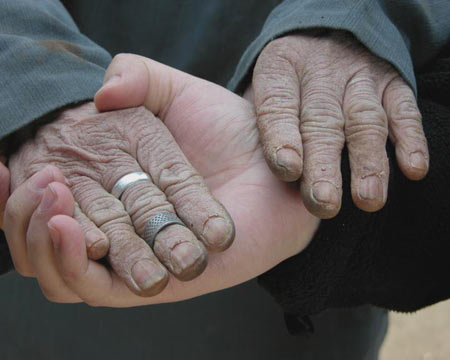 One long-held belief in globalization literature is that developed nations find themselves torn between the lure of expanding investment opportunities at the same time that jobs for its middle and lower class begins to fall apart. A lecture on "The Impact of Globalization on the World's Poor" at The Brookings Institution announced a new study that showed labor and capital movements mostly transfer between well-off countries, bypassing states and economic sectors that need its help the most. The presentation marked the kick-off of a new text published by UN University, whose scholars do great work that I have used in the past.
One long-held belief in globalization literature is that developed nations find themselves torn between the lure of expanding investment opportunities at the same time that jobs for its middle and lower class begins to fall apart. A lecture on "The Impact of Globalization on the World's Poor" at The Brookings Institution announced a new study that showed labor and capital movements mostly transfer between well-off countries, bypassing states and economic sectors that need its help the most. The presentation marked the kick-off of a new text published by UN University, whose scholars do great work that I have used in the past.
A few major points
Globalization is defined by this lecture as:
greater integration within the world economy via increased openness to international trade, capital, and labor movements; greater international flow of technology, information, knowledge and ideas.
For those who study poverty reduction, this openness leads to both growth and unequal distribution of wealth. Therefore, a state cannot just affirm the need for openness, but must also look at the domestic patterns of economic growth, ensuring that all classes and different economic sectors benefit from new economic investment. Openness alone will not guarantee a healthy economy.
Two major initiatives:
The two universally important sectors that this collection of studies found most important were a. agriculture, especially for developing states; and b. education, particularly higher education. Investments in higher education brought more returns to a country's income than even secondary education, a fact that I thought surprising.
 Agricultural growth for developing states, needs to be encouraged under two domestic criteria as well (if not more) than agricultural growth for commodity export. Agricultural production must include crops that lower prices for a states' urban population, and crops that also provide sustainable income for a farming population. This requires a fairly complex approach to domestic farm-to-market initiatives, allowing domestic marketization as well as international marketization, so that farmers are able to make market decisions and diversify for local markets based upon domestic demand. This particular part of the puzzle would have been worth any number of lectures, since it doesn't seem as if any state on the globe has this figured out completely; however, there was only two hours to get it all in.
Agricultural growth for developing states, needs to be encouraged under two domestic criteria as well (if not more) than agricultural growth for commodity export. Agricultural production must include crops that lower prices for a states' urban population, and crops that also provide sustainable income for a farming population. This requires a fairly complex approach to domestic farm-to-market initiatives, allowing domestic marketization as well as international marketization, so that farmers are able to make market decisions and diversify for local markets based upon domestic demand. This particular part of the puzzle would have been worth any number of lectures, since it doesn't seem as if any state on the globe has this figured out completely; however, there was only two hours to get it all in.
Perverse flows of globalization:
 Several flows of factors of production (labor, capital) in economic globalization ripple backward, contrary to the theories suggested by initial economic models of globalization. These backward flows are called "perverse" in this study, and these perverse flows show why some of the world's poor never seem to benefit from global markets.
Several flows of factors of production (labor, capital) in economic globalization ripple backward, contrary to the theories suggested by initial economic models of globalization. These backward flows are called "perverse" in this study, and these perverse flows show why some of the world's poor never seem to benefit from global markets.
Labor: Labor flows are perverse because skilled labor does not migrate to poor countries; instead it moves between developed countries. Furthermore, skilled labor originally residing in poor countries often moves to developed countries. Unskilled labor is generally held back by administrative obstacles or immigration policies. Therefore, labor migration has not been a force for wage equalization, as it was, say, in the United States between 1870 and 1914.
Investment: Portfolio capital flows are made largely to diversify holdings and manage investment risk rather than to provide development capital in developing states. Furthermore, foreign direct investment is dominated by intra-industry investment between already developed states (which is also risk-reducing). Instead taking an “ain't it awful” approach, however, states should groom themselves for investment knowing that their potential partners are risk adverse. The way to meet these objections is through consistent approaches to rule-of-law and business initiatives.
Wherever multinational corporations invest, they create factor mobility through investment and skilled migration flows. In the meantime, unskilled labor, and very poor countries continue to miss out on the benefits of globalization. In other words, job flight is less about a brain drain in developed countries than it is for developing ones; job flight is more about being replaced by technology than it is job arrival for poor countries; and creating good investment environments not only brings investment, but keeps valuable human capital at home.
Part 2 takes these general comments and looks at the numbers.
Thanks to The Brookings Institution and UNU for the opportunity to look at this new scholarship.
Photos: China Daily; Melbourne.metblogs; WSJ